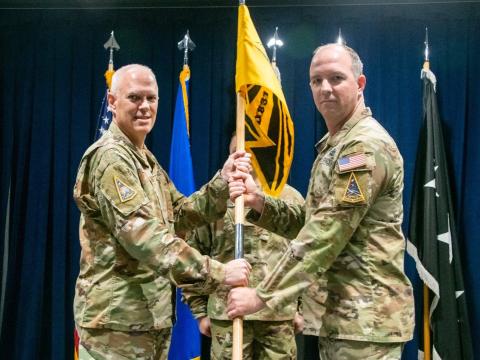Air Force in Europe Looks to Cold War Positioning
For several years, the U.S. Air Force has been implementing agile combat employment (ACE) as a different way to conduct operations and protect assets in the face of the growing near-peer adversarial threat. The U.S. Air Forces in Europe-Air Forces Africa (USAFE) and the Pacific Air Forces have led the experimentation and implementation of ACE, in a design that moves airplanes, airmen, operations and supplies more quickly in an agile, spread-out fashion, versus conducting more static, larger base operations. USAFE is working to further evolve ACE operations in Europe, especially given the lessons learned from seeing Russia’s illegal invasion of Ukraine, reported Gen. James Hecker, commander of U.S. Air Forces in Europe, U.S. Air Forces Africa and NATO Allied Command.
“To protect what the U.S. Air Force has and now what NATO has, we try to disperse our aircraft or our high value equipment amongst the bases, so they don't just hit one section of the base and they get all your aircraft—that's not good enough,” Gen. Hecker, speaking to reporters about the concept and possible vulnerabilities, during an August 18 virtual Defense Writers Group meeting.
Gen. Hecker, who puts ACE as one of his top five priorities, noted how the United States is learning from how the Ukrainians have protected their aircraft operations with stealthy, agile shifts away Russian advances.
“With Ukraine, we see how they're doing it and what's been effective for them, moving their airplanes around against the threat,” Gen. Hecker stated. “If we go to [war], we need to make sure that we can do that as well. Ukraine has been doing it for a year and a half and they've gotten really good at it. We haven't been doing it very often. We just got to make sure that we can be as proficient as they are.”
In contrast to the 93 air bases that the United States held in World War II, the Air Force scaled down to 33 permanent overseas air bases, according to a 2018 Base Structure Report from the Department of Defense. For ACE to work in Europe, the Air Force will expand its presence again, starting with the re-establishment of 20-25 Cold War-era airfields at “strategic” locations across the continent, the commander explained.
“If you go back 34 years ago before the Cold War ended, we had a lot of air bases that had a lot of protection,” Gen. Hecker said. “Back then if you flew a fighter [jet] into any one of those bases, when you landed, no matter what country it was, they could give you gas. They could change your tires if you needed and some of them could even load weapons onto your aircraft. Well, we lost that after the Cold War, that atrophied over the last 30 years. So, we are working to get that back.”
At the undisclosed locations, the Air Force will put in place infrastructure including common equipment that could be used in various aircraft. “We are going to work with the nations and their maintenance [teams] so that we can get in and be operable on different kinds of aircraft like we were able to do 34 years ago,” the general noted. “That is something that obviously doesn't happen overnight, but it is one of my priorities, so it's something that we're really getting after.”
The general also mentioned that newest NATO member, Finland, “brings to the plate” additional possible locations. “As the weapons get a lot more accurate, they can just hit every single aircraft even if it's dispersed,” he added. “What we have to do now is disperse our aircraft amongst different airfields and potentially even on highways, and these kinds of things.”
Moreover, command and control capabilities must advance as well, Gen. Hecker continued. “My fifth priority is command and control,” he said. “How are we going to command and control all these units especially if they're taking off and landing at other airfields using the ACE concept. And how we're going to make that happen, especially if we get denied communications.”

The Air Force is also returning to conducting Bomber Task Force missions with its stealth bomber, the B-2 Spirit, which had resumed flights in May following a second B-2 aircraft fire last December. The service is currently conducting Bomber Task Force 23-4 in Iceland with 150 airmen and three B-2’s from Whiteman Air Force Base, Missouri arriving at Iceland’s Keflavik Air Base last week.
Like the ACE approach, the Bomber Task Force mission was a shift in operations to support Dynamic Force Employment, for executing fast, less predictable and scalable missions in a near-peer environment, versus long-term bomber positioning.
Over the next several weeks, the expeditionary bomber crew in Iceland will be conducting several different missions, the general reported.
“I'm not going to get into exactly what those missions are ... but we tend to partner with our allies and NATO,” Gen. Hecker stated. “We can fly up north, we can fly in the center, we can fly down in the south. There's a lot of different places where we can fly and we typically kind of exercise all of them. And then we exercise working with a large number of the 31 nations that are in NATO. There'll be a lot of planning going on with those nations and then we'll be executing the missions, over the next couple of weeks.”
This collaborative training effort will increase integration with NATO Allies, partners and U.S. joint forces, he said.





Comments